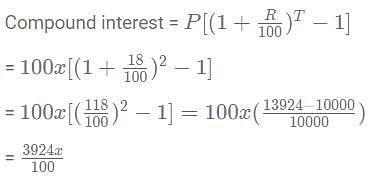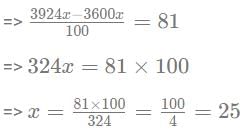Practice Test: Quantitative Aptitude - 11 - SSC CGL MCQ
25 Questions MCQ Test SSC CGL Tier 1 Mock Test Series 2025 - Practice Test: Quantitative Aptitude - 11
The pie-chart given below shows expenditure incurred by a family on various items and their savings. Study the chart and answer the questions based on the pie-chart
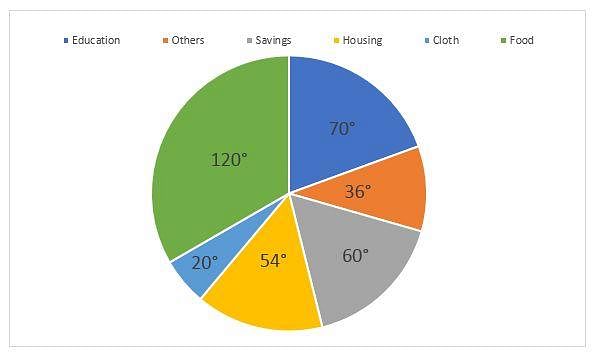
The ratio of expenditure on food to savings is:
The ratio of expenditure on food to savings is:
The graph shows the result of 10th class students of a school for 4 years. Study the graph and answer the questions:
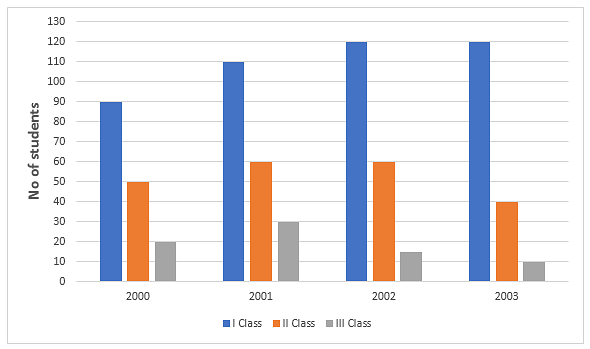
The number of students appeared for the 10th class exam in the year 2002 is
The graph shows Income and Expenditure(Rs. in lakhs) of a company.Study the graph and answer the questions.
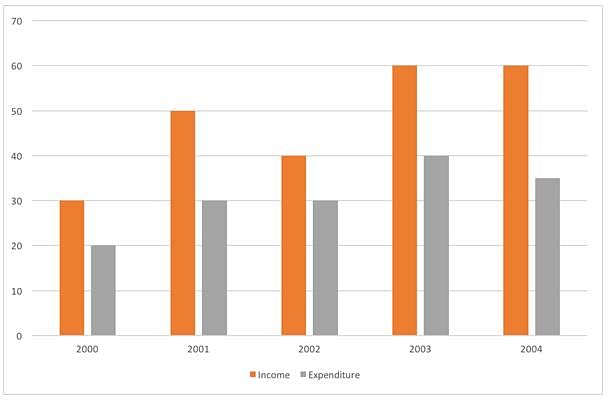
The expenditure from 2002 to 2003 increased by

In the following questions, the following Bar Diagram shows the percentage of 7 coloured balls sold in 5 shops A, B, C, D and E. All the five shops sold an equal number of balls. Study the graph and answer all the questions.
In shop A, the ratio of percentage of violet balls and yellow balls is:
Directions: The following graph shows the production of cotton bales of 100 kg each in lakhs by different states A, B, C, D and E over the years. Study the graph and answer the following Questions.
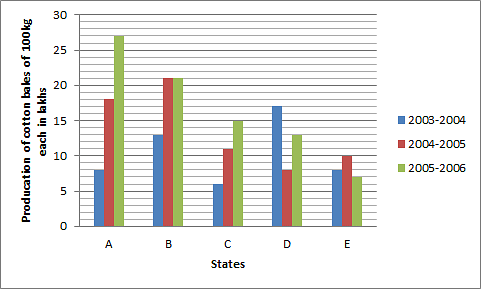
In which State(s) is there a steady increase in the production of cotton during the given period?
If x = 2 + √3, y = 2 − √3, then the value of
If a2 + b2 + 4c2 = 2(a + b − 2c − 3) and a, b, c are real, then the value of (a2 + b2 + c2) is
The sum of a non-zero number and thrice its reciprocal is 52/7. Find the number.
The product of two numbers is 45 and their difference is 4. The sum of squares of the two numbers is
In Δ ABC, ∠B = 90° and AB : BC = 2 : 1. The value of sin A + cot C is
In a rhombus ABCD, ∠A = 60° and AB = 12 cm. Then the diagonal BD is
If there are four lines in a plane, then what cannot be the number of points of intersection of these lines?
The difference between the compound interest and simple interest for the amount Rs. 5,000 in 2 years is Rs.32. The rate of interest is
In what time will 8,000, at 3% per annum, produce the same interest as 6, 000 does in 5 years at 4 % simple interest?
The compound interest on a certain sum of money for 2 years at 5% per annum is 410. The simple interest on the same sum at the same rate and for the same time is
The compound interest on a certain sum of money at a certain rate per annum for two years is 2,050, and the simple interest on the same amount of money at the same rate for 3 years is 3, 000. Then the sum of money is
The difference between simple and compound interests compounded annually on a certain sum of money for 2 years at 18% per annum is Rs 81. The sum is
The H.C.F. and L.C.M. of, two numbers are 8 and 48 respectively. If one of the numbers is 24, then the other number is
L.C.M. of two numbers is 120 and their H.C.F. is 10. Which of the following can be the sum of those two numbers?
Two numbers are in the ratio 3 : 4. Their L.C.M. is 84. The greater number is
What is the HCF (highest common factor) of 57 and 513?
The sum of two numbers is 36 and their H.C.F and L.C.M. are 3 and 105 respectively. The sum of the reciprocals of two numbers is
|
237 docs|133 tests
|












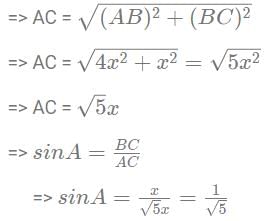




 (where P is principal amount 5000 and r is rate )
(where P is principal amount 5000 and r is rate )




